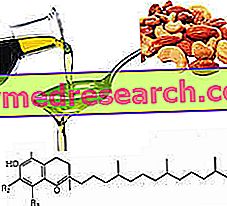Introduction: olive oil
Olive tree: botanical aspects and cultivation
Mature olive composition, nutritional properties
Olive harvest
Olive oil: chemical composition
Olive oil: properties and nutritional characteristics
Preparation of olive oil
Olive oil conservation
Pomace oil
Classification of olive oils, analysis and fraud
Olive oil as a laxative
Olive in herbal medicine - sea buckthorn
Cosmetic use: olive oil - Unsaponifiable with olive oil - Olive leaf extract
Classification of Olive oils (Reg CE 1513/2001)
VIRGIN OLIVE OIL : "oils obtained from the olive mechanically or with other physical processes, in such thermal conditions as not to alter them and which have not undergone any treatment other than washing, decantation, centrifugation and filtration".

These virgin oils are then classified according to the free acidity.
Based on the acidity expressed in oleic acid, they are divided into:
- EXTRA VIRGIN OLIVE OIL : absolutely perfect taste and free acidity, expressed in oleic acid, not higher than 0.8%.
- VIRGIN OLIVE OIL : perfect taste and free acidity not exceeding 2%.
- VIRGIN OLIVE OIL : imperfect taste and / or free acidity greater than 2%. It cannot be used for direct consumption but must be sent for a rectification process that corrects its acidity and taste. The same goes for pomace oils. Therefore, all the oils obtained through the physical processes we have seen, but which have a free acidity greater than 2% and / or an imperfect taste, are called lampante virgin olive oils.
OLIVE OIL : Refined olive oil cut with virgin olive oils, other than lampante oil, with an acidity of no more than 1%.
OLIVE GRILLED OIL : oil obtained from the cutting of refined olive-pomace oil and virgin olive oil different from the lampante; acidity not higher than 1%.
In general, rectified oils are used for the preparation of pickles, such as canned tuna.
Classification of olive oils | |
| Extra virgin olive oil | acidity not higher than 0.8% |
| Virgin olive oil | acidity not higher than 2% |
| lampante virgin olive oil | acidity over 2% |
| Olive oil | obtained from a blend of refined olive oil and virgin olive oil, different from the lampante, with an acidity of no more than 2% |
| Olive pomace oil | obtained from the mixture of refined olive-pomace oil and virgin olive oil, different from the lampante, with an acidity not exceeding 1% |

Analysis of olive oils
Analyzes of olive oils can have different purposes:
- verify its genuineness and classification (the wording on the label must respect the parameters imposed by the law)
- to ascertain the quality (genuineness)
- highlight the correspondence to the particular provisions for typical products. Like all other food products, olive oils can also be marked with quality labels, such as the PDO (protected designation of origin), the IGP (protected geographical indication) and the TSG (traditional specialty guaranteed). These three brands are given by the European community based on particular quality characteristics. In addition to free acidity, therefore, the EU imposes for these oils a low content of trans fatty acids, a determined content in trilinolein (simple triglyceride consisting of glycerol esterified with three molecules of linoleic acid) and an absolutely perfect taste (via panel test).
These last three checks are mandatory only for olive oils that have a quality mark.
The most frequent frauds
Since olive oil is the most prized of all edible oils, it is also the most subject to sophistication.
In particular the most common frauds are:
- extra virgin olive oil containing refined oils, both olive and seed (cut).
Oils with analytical contents that do not meet the requirements of the regulations
- Community funds (for example, an acidity exceeding the limits set for that particular category).
- Variously colored seed oils that can be passed off as olive oils (especially almond and peanut oils).



